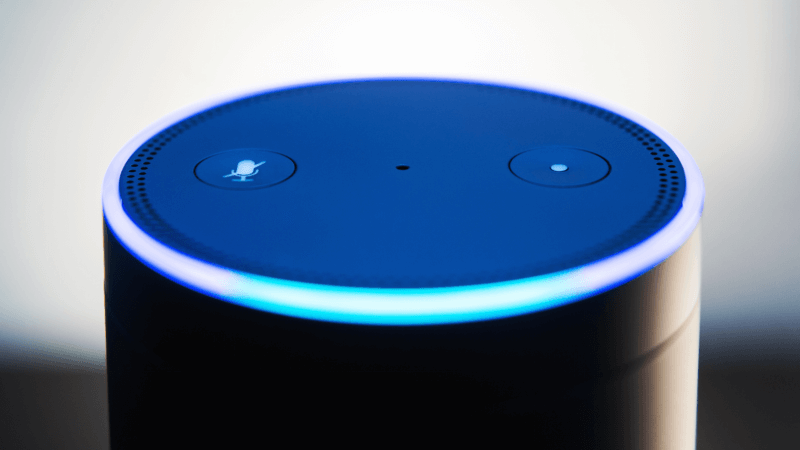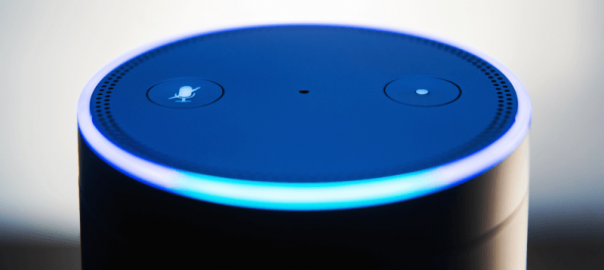Contributor Steve Tutelman explains how voice search is bringing marketers closer to the customer.

Voice search stands to live at the heart of how retail marketers guide the customer experience into the future.
Behind every voice query lies data riper with real-time intent and context than perhaps any other source of shopper information. A spoken query is a direct window into what consumers want at that moment, how they think about a topic — or product — and their emotional state of mind.
As a result, voice queries are leading to new pools of intent-driven, contextual, real-time data that marketers can use to develop more customer-centric engagement strategies.
To be sure, voice technology has come a long way, and it still has a way to go. But its upward trajectory is poised to deliver better content and interactions in the near term that will increase adoption of spoken search, and in turn, enable marketers to evolve their approach to the customer experience.
Voice as a pathway to understanding user intent and context
User intent is a fundamental aspect of search, just as it’s a fundamental aspect of engaging with consumers at the right time with the right content. Google has made major strides to improve its algorithms’ semantic understanding, perhaps most notably with its Hummingbird and RankBrain rollouts. Marketers and search giants like Google are aligned on a mission to understand user intent.
That’s why the ongoing development of voice search — including natural language processing and natural language understanding — is so important to the retail industry. These innovations represent a shift in marketers’ ability to understand consumers’ intent and deliver better experiences.
Think about some of the latest milestones in the development of voice technology. Google Assistant has achieved a word accuracy rate of 95 percent for the English language, according to Mary Meeker’s Internet Trends 2017 Report.
Google Assistant also began recognizing individual voices last April. Amazon quickly countered when it introduced the same capability in Alexa in October. These developments are key for the artificial intelligence (AI) to understand user intent and help create useful, enjoyable and more personalized voice-based experiences for consumers.
Tone: The next frontier
The ability to understand tone could take personalization to the next level. Research and development is already underway at organizations including the Massachusetts Institute of Technology to use artificial intelligence to detect the tone of conversations happening with digital devices.
While many of us recognize tonality and emotion naturally through verbal and non-verbal cues, these elements are especially difficult for a machine to identify. But with the ability to navigate nuanced intonation, voice technology could lead to a world of marketing that’s much more in tune with shoppers’ states of mind.
And there’s no discounting the importance of getting inside shoppers’ heads to drive a successful marketing strategy.
Picture this: A shopper says to her voice assistant on her smartphone, “I’m looking for a new baking dish… made of ceramic?” There’s uncertainty in her voice. She’s not sure if ceramic is the material she wants yet or not.
The assistant replies, “Would you like to see only ceramic baking dishes, or baking dishes made of other materials too?”
“Show me ceramic and glass baking dishes,” she responds. The assistant serves up results that meet the consumer’s request.
Consider if the consumer had typed her initial query instead. She probably would have written something less conversational, such as “baking dish made of ceramic” or “ceramic baking dish.” Imagine how the search results would differ from those served through the process of voice querying.
Reshaping marketing strategy
Continuing with the example, imagine how your marketing strategies and tactics would differ if you managed a cookware catalog and saw “show me ceramic and glass baking dishes” occurring more often than “ceramic baking dish” in your search query reports.
When it comes to your search or shopping ad campaigns, you might shift budget to invest in key terms that speak to both ceramic baking dishes and glass baking dishes, rather than just ceramic. That could give under-served glass baking dishes the opportunity they deserve to appear in search results and win sales.
Equally important, the imperative to improve product landing pages could be stronger than ever with the growth of voice search. Think about how you would develop your product pages for the shopper hunting for baking dishes. You’d probably want to be sure to include calls to action to help her explore various baking dishes in your catalog. There could also be information covering the benefits of choosing one material over the other.
Product landing pages are highly trafficked entries to retailers’ sites, in part because marketers are investing more budget in search and shopping campaigns. Greater use and development of voice search can clarify how marketers should invest in product landing page improvements and deliver experiences that are more finely tuned to shopper needs and intent.
The vocal, local impact
It’s conceivable that voice technology’s ability to interpret tone could impact local search campaigns in a measurable way, too. Say a consumer’s iPhone is almost dead and he needs to buy a charging cable right away to make a time-sensitive call.
We can already literally ask Google to help us find stores nearby that sell iPhone charging cables. But it’s possible we’ll see a day when Google will use the combination of words and tone to deduce that we want to see local results first.
The consumer might simply say, “Find me an iPhone charging cable fast.” Google could key in on the word “fast,” and the urgency in his voice signals it to prioritize local results to expedite purchase.
Consider how you’d adjust your strategies for local inventory ads as a result. You might pull budget away from “near me” searches — one of the most popular terms for local inventory ad campaigns today — and invest in searches around words like “fast” and others that shoppers increasingly gravitate toward to surface local results.
Better customer experiences require granular knowledge
With retail competition at a fever pitch, marketers need to continually evolve their approach to the customer experience. Doing so requires constantly improving engagement mechanisms, as well as better sources of knowledge about customers to make decisions.
Crucially, voice search can fill both needs, potentially enabling marketers to take leaps forward in providing frictionless retail experiences.
Opinions expressed in this article are those of the guest author and not necessarily Marketing Land. Staff authors are listed here.
Marketing Land – Internet Marketing News, Strategies & Tips
(86)





